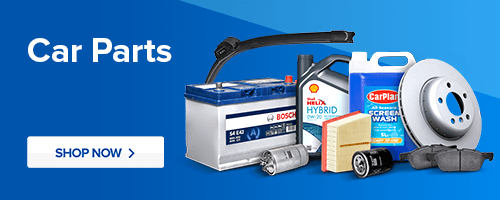Without a car engine, your vehicle wouldn’t be able to start. Multiple components make up a car engine, but knowing what each of them are, and what they all do, can be difficult.
To make things easier, we’ve created an expert guide that shows and explains the names of car engine parts and what each of the parts do, helping you gain a better understanding of the mechanics within your vehicle.
If you ever do find that your engine is struggling, we’ve got plenty of replacement engine parts which will get you back on the road in no time.
1. The engine block
The engine block (also known as the cylinder block) is the component which holds all the other parts of the car engine together. They are often made from aluminium or cast iron and are divided into three sections: engine block, cylinder head and crankcase.
The reason the engine block is also called the cylinder block is because it contains cylinder tubes. The amount of cylinder tubes the engine block sets out for the pistons, the more powerful the engine is.
2. The pistons
Pistons are the part of your car engine that generates the energy moving all the components. Pistons do this by moving up and down the engine block cylinders extremely fast, with the aid of heat and gas. When combined, the pistons meet with the heat and gas, causing an internal combustion which starts the engine.
Pistons look like small cans with two different rings around them: the compression rings and the piston rings. The compression rings help prevent waste gas getting inside the cylinders, whilst the piston rings stop the pistons wearing down too much and avoid excess oil getting onto the walls of the cylinders.
3. The crankshaft
The crankshaft takes the energy from the pistons moving up and down and turns it into rotational energy, which moves the wheels on your car. The crankshaft can be found in the crankcase, which is below the engine block.
Crankshafts are usually manufactured from steel because of the metal’s overall strength. Often, crankshafts are also designed as one single part, rather than multiple parts. This is because it allows for stronger stress-bearing when driving and limited vibration space, which is important considering how much crankshafts rotate.
4. The connecting rod
As its name suggests, a connecting rod is a piece of metal which connects the piston to the crankshaft. The connecting rod converts the pressure from the piston to rotate the crankshaft. Because of the level of pressure and movement connecting rods require, they’re usually made from either steel or aluminium.
5. The camshaft
A camshaft works with the crankshaft to regulate the timing of opening and closing valves. Their other main function is to absorb the rotary motion from the crankshaft and then transfer it back into linear motion. The camshaft is either placed in the engine block or on the cylinder heads.
Like all the other parts of your car engine, the camshaft is made from strong metal such as chilled iron, which more resistant than other metals.
6. Timing belts
Timing belts (sometimes called timing chains) are the part of your car engine which connects the crankshaft and the camshaft together. Its role is to make sure that the crankshaft and camshaft are working together in harmony, while also making sure that the pistons don’t hit any of the valves.
Timing belts are manufactured from reinforced rubber. This means they can sometimes wear away as temperature conditions change while driving.
7. The oil pan
With all the metal that make up the different parts of your car engine, you need to have oil to help lubricate each part, so they run smoothly. The oil pan (also known as the sump pan) lives within the crank case and is where you’ll find the engine oil. The oil pan has a pump which lets out drops of oil onto the engine parts, keeping them lubricated.
After the oil has travelled around the engine, it returns back to the oil pan and the process begins again. It’s a good idea to check your engine oil frequently, because of how much your engine relies on it to run effectively.
8. Spark plugs
Above each of the cylinders there are spark plugs. As their name suggests, spark plugs are the part of your car engine which ignite the air and fuel, causing combustion within the engine. The energy produced from the spark plugs then makes the pistons move down and gets your car moving.
9. Cylinder head
The last of the three sections that makes up your car engine is the cylinder head. The cylinder head is right at the top of your car engine and often has a cover placed over it, meaning it’s the first part of your car engine you’ll see when you open up your boot or bonnet.
The main purpose of the cylinder head is to prevent the loss of gas during the combustion stage of your engine. They channel the intake of gas going into your engine and manage the exhaust gas which leaves it.
The cylinder head also contains many smaller parts within your car’s engine, such as the valve springs, belt drive assemblies and rockers. Cylinder heads occasionally contain camshafts as well.

Knowing what parts of a car engine are, along with their names, makes a big difference when you need to carry out essential checks to your car before a long drive.